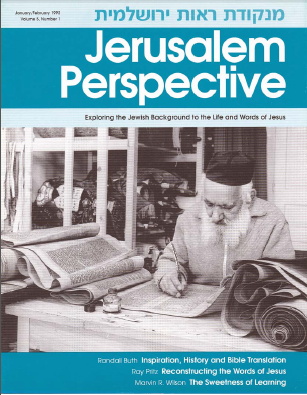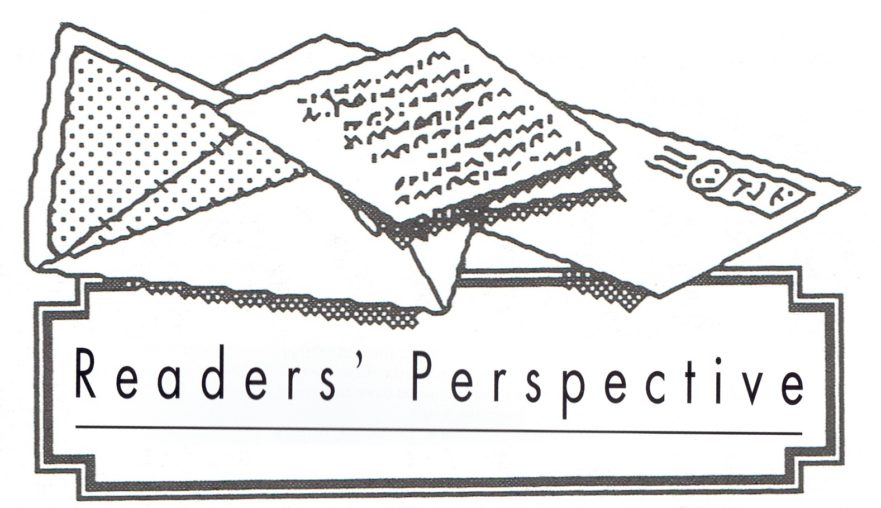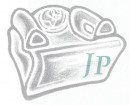Question received from Paul Hunt (Stone Mountain, Georgia, U.S.A.) that was published in the “Readers’ Perspective” column of Jerusalem Perspective 36 (Jan.-Feb. 1992): 2, 15.
There is something scary in the suggestion that there may be an additional Gospel. The canon of Scripture is, after all, complete. And I hope you don’t suggest otherwise.
David Bivin responds:
We Christian members of the Jerusalem School of Synoptic Research believe the canon of Scripture is complete. The School’s Jewish members also think it is complete, but for them, of course, it was completed long before the books of the New Testament were written.
None of the School’s members would want to suggest that the Hebrew gospel, which according to church tradition was written by the apostle Matthew, should be added to the canon. In any event, this book doesn’t exist. Although one occasionally hears rumors of the discovery of a portion of the New Testament written in Hebrew or Aramaic, to date, there is not a single extant Hebrew-language manuscript from the early Christian era of any of the New Testament books. The Hebrew gospel that Matthew is reported to have written is apparently another of the many Jewish books that were lost in the destruction of the Second Jewish Commonwealth.
While most of the scholars of the Jerusalem School assume that the first account of Jesus’ life was written in Hebrew, probably by one of Jesus’ original disciples, they recognize that all the books of the canonical New Testament, including the synoptic Gospels, were written in Greek. The existence of an early Hebrew life of Jesus can at this time be nothing more than conjecture. On the other hand, study has consistently shown the importance of recognizing the profoundly Jewish background of the Gospels, and the Jerusalem School firmly believes that a Hebraic perspective is key to better understanding these documents.
Scholars of the Jerusalem School do not believe that the conjectured Hebrew gospel of Matthew can ever be reconstructed with one hundred percent accuracy. Probably none of the canonical Gospels has preserved all the stories that were in Matthew’s Hebrew gospel. For example, the Parable of the Prodigal Son appears only in Luke’s Gospel. If we assume that this parable was part of the original Hebrew composition and that all or some of the other writers of New Testament Gospels knew a Greek form of it, then these other writers have chosen to omit the parable from their accounts. (Other unique Lukan stories are the Parables of the Good Samaritan, the Rich Fool, the Rich Man and Lazarus, the Unjust Steward, the Unjust Judge and the Pharisee and the Tax Collector.)
Nor is it likely that Luke copied all the stories he found in his sources. Luke’s Gospel does not contain stories such as Matthew’s Parables of the Hidden Treasure, the Pearl, the Dragnet, the Unmerciful Servant, the Laborers in the Vineyard, the Two Sons, the Marriage Feast and the Ten Maidens. Thus, a good possibility exists that there were a number of stories in the Hebrew gospel that were omitted by all the canonical Gospel writers.
These stories have been lost, but even those that have been preserved in one or more of the canonical Gospels usually cannot be reconstructed in Hebrew with perfect confidence. Because our present knowledge of first-century Hebrew and Greek is defective, the task of retranslating the Greek of the Gospels to Hebrew is not easy.
Although the canon of Scripture has already been established, this does not mean that the canonical writers did not use sources. In fact, we have evidence in the Bible itself that these writers did use sources. The author of Chronicles, for instance, took approximately half of his work from the books of Samuel and Kings. At others times writers used non-canonical works, some extant and some which have been lost in the course of history (1 Kings 11:41; 14:19, 29). I am sure that if any of these lost sources were to come to light, they would be helpful in better understanding the canonical text.
Happily, even without new manuscript discoveries, scholars sometimes are able to find the lost sources used by a canonical author by analyzing existing manuscripts. Robert Lindsey has been able, for instance, to isolate two hypothetical sources used by the author of Luke, and to further delineate an even earlier Greek ancestor of Luke, a Greek translation of the Hebrew Life of Jesus.
Because we are sure the question of canon and authority of Scripture is of interest to many other readers, we have asked Randall Buth, a former Wycliffe Bible translator and United Bible Societies consultant in Africa, and Ray Pritz, former head of the Bible Society in Israel, to give their perspective on this subject. Dr. Buth’s comprehensive article is titled, “Inspiration, History and Bible Translation.” In “Reconstructing the Words of Jesus,” Dr. Pritz discusses some of the problems that face text critics. In a related article, “New Testament Canon,” he has described the process that led to the fixing of the New Testament canon.
































































































